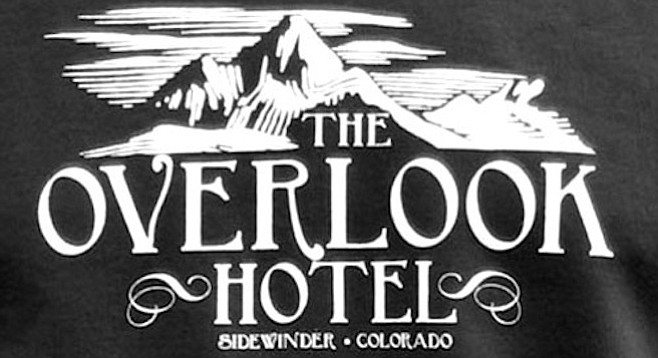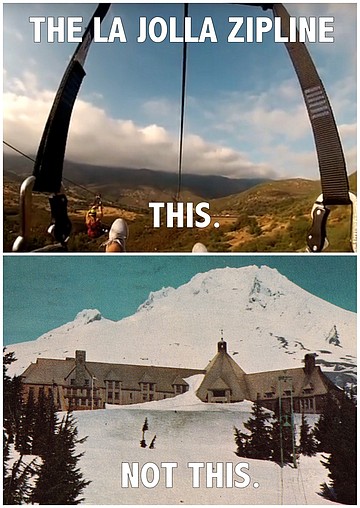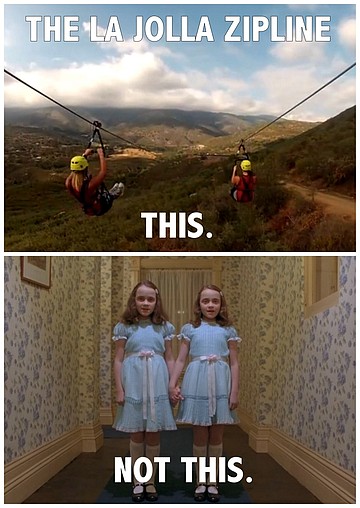 Facebook
Facebook
 X
X
 Instagram
Instagram
 TikTok
TikTok
 Youtube
Youtube

On September 3, the La Jolla Indian Reservation opened what is thought to be the longest zipline in Southern California. For $99, campers at the reservation campground can soar through the air for over a mile over lands believed to contain the bones of generations of Native Americans. And in fact, those bones are a big part of the reason why the La Jolla tribe decided to make ziplining its big tourist draw.
"If there's one thing we learned from The Shining, it's that you shouldn't build a vacation attraction on top of on old Indian burial ground," says tribal spokesman Wayne Calumet. "There's a reason that all that blood came out of that elevator. The shaft goes all the way to the basement, down among the bodies of this land's indigenous people, slaughtered by the white man on his quest for power and pleasure. And let me tell you, there are a lot of burial grounds on our reservation. We weren't about to desecrate our heritage and open a supernatural wound that would lead to madness and carnage just to slap up another casino. On the other hand, the white man's dollar is as green as anybody else's. So, we said to ourselves: if we can't build on the burial grounds, maybe we can build above them. Happily, this was one of those cases where the teachings of our ancestors just don't have anything to say on the matter. So, we think that, piety-wise, we're on solid ground. Or rather, above it."


Calumet provided SD on the QT with rough drafts of the tribe's planned promotional campaign, a riff on the difference between the excitement and fun of ziplining and the creeping dread of The Shining's Overlook Hotel.


On September 3, the La Jolla Indian Reservation opened what is thought to be the longest zipline in Southern California. For $99, campers at the reservation campground can soar through the air for over a mile over lands believed to contain the bones of generations of Native Americans. And in fact, those bones are a big part of the reason why the La Jolla tribe decided to make ziplining its big tourist draw.
"If there's one thing we learned from The Shining, it's that you shouldn't build a vacation attraction on top of on old Indian burial ground," says tribal spokesman Wayne Calumet. "There's a reason that all that blood came out of that elevator. The shaft goes all the way to the basement, down among the bodies of this land's indigenous people, slaughtered by the white man on his quest for power and pleasure. And let me tell you, there are a lot of burial grounds on our reservation. We weren't about to desecrate our heritage and open a supernatural wound that would lead to madness and carnage just to slap up another casino. On the other hand, the white man's dollar is as green as anybody else's. So, we said to ourselves: if we can't build on the burial grounds, maybe we can build above them. Happily, this was one of those cases where the teachings of our ancestors just don't have anything to say on the matter. So, we think that, piety-wise, we're on solid ground. Or rather, above it."


Calumet provided SD on the QT with rough drafts of the tribe's planned promotional campaign, a riff on the difference between the excitement and fun of ziplining and the creeping dread of The Shining's Overlook Hotel.